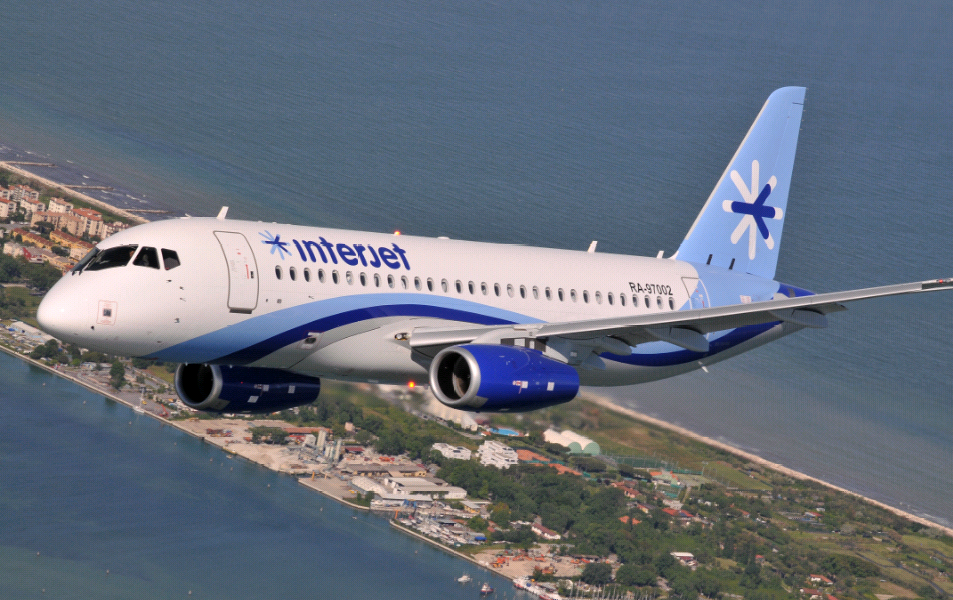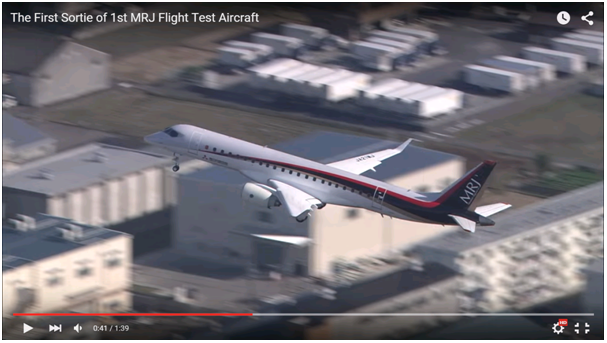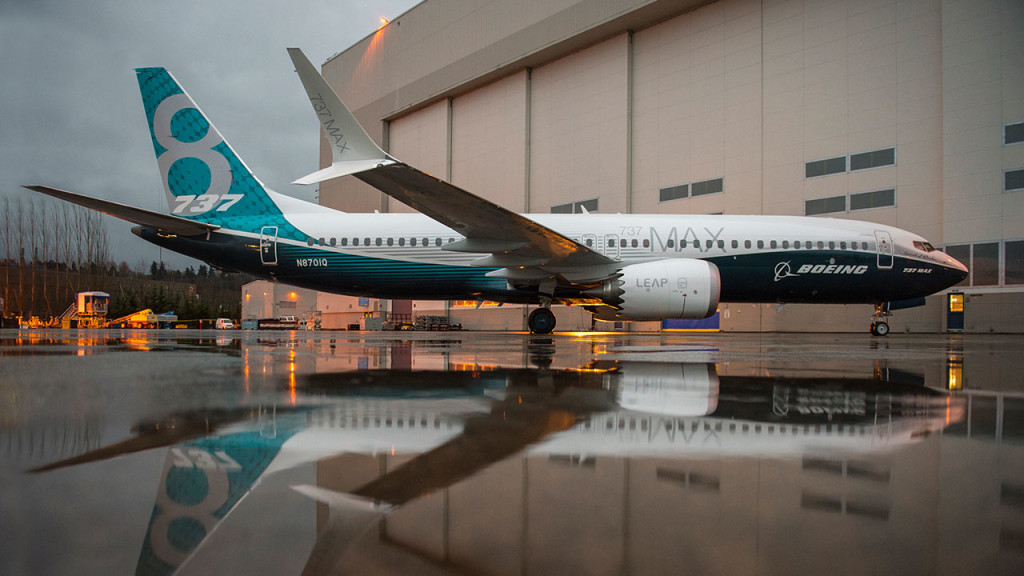Leeham News and Analysis
There's more to real news than a news release.
 Leeham News and Analysis
Leeham News and Analysis
- Does an A220-500 need a new wing and engines? Part 4. July 3, 2025
- GE testing of giant GE9X engine aims for maturity at entry into service June 30, 2025
- Bjorn’s Corner: Air Transport’s route to 2050. Part 28. June 27, 2025
- Parent agency, FAA often at odds as politics outweighs safety June 26, 2025
- Electric Flight and the Ugly Duckling June 25, 2025
Nordic Aviation Capital completes second major acquistion
March 15, 2016: Nordic Aviation Capital yesterday announced it acquired regional aircraft lessor Jetscape Aviation Group. This is the second major acquisition since  December. Then, NAC agreed to acquire 25 ATR turboprop aircraft from Air Lease Corp., which decided to focus entirely on jets, most of which are mainline aircraft. All but a handful of the ATRs were already leased, with the remaining still in production.
December. Then, NAC agreed to acquire 25 ATR turboprop aircraft from Air Lease Corp., which decided to focus entirely on jets, most of which are mainline aircraft. All but a handful of the ATRs were already leased, with the remaining still in production.
Nordic had nearly 250 aircraft from the ATR and Bombardier Dash and Q families, plus a small number of Bombardier CRJs, Airbus A320s and Boeing 737s. The Jetscape acquisition brings Embraer EJets to the Nordic portfolio.
“The deal will see Nordic Aviation Capital expand into the regional jet arena, bringing 28 owned Embraer E-Jets, commitments for 11 E-Jets and a further 18 of the type under management into its sizeable regional aircraft portfolio,” the company said in a press release.
Posted on March 15, 2016 by Scott Hamilton
ISTAT Day 1: Engine updates for CFM, GE, RR and PW
Feb. 29, 2016, (c) Leeham Co.: The LEAP engine, for the Boeing 737 MAX, Airbus ![]() A320neo and COMAC C919 is the fastest-selling engine in history, says Jean-Paul Ebanga, the president of CFM International. More than 10,000 have been sold.
A320neo and COMAC C919 is the fastest-selling engine in history, says Jean-Paul Ebanga, the president of CFM International. More than 10,000 have been sold.
- We’re at the 2016 ISTAT AGM in Phoenix and will be reporting today and tomorrow on presentations and news from the sidelines.
“It’s on-time and on-spec,” Ebanga said. It’s either been on the date set four years ago or ahead of schedule. The engines delivered to Airbus for the A320neo are on spec, he said. It’s been certified for the neo and will be certified soon for the MAX, with 90% of the information submitted.
Posted on February 29, 2016 by Scott Hamilton
Airbus, Boeing, Bombardier, CFM, Comac, CSeries, E-Jet, Embraer, Irkut, Mitsubishi, Rolls-Royce
737 MAX, A320NEO, Airbus, Bill Brown, Boeing, Bombardier, C919, CFM, Comac, CSeries, EJet E2, Embraer, GE Aviation, Irkut, Jean-Paul Ebanga, LEAP, MC-21, Mitsubishi, MRJ90, Rolls-Royce
Embraer focus: on-time EIS for E2
Feb. 24, 2016, © Leeham Co., Sao Jose dos Compos: The focus over the next two years will be the on-time entry into service of the E2 family, said John Slattery, chief commercial officer of Embraer.
If achieved, this will be in marked contrast to recent new aircraft programs at Airbus, Boeing and Bombardier.
Posted on February 24, 2016 by Scott Hamilton
EJet-E2 ranged upped by 450nm
Feb. 24, 2016, © Leeham Co., Sao Jose dos Campos: The new Embraer EJet E2 will have 450nm more range than the previously advertised 1,920nm, the company announced today.
Luis Carlos Affonso, senior vice president of Embraer Commercial Aircraft, announced the change during media briefings in advance of the E190-E2 rollout tomorrow at the EMB plant here.
Posted on February 24, 2016 by Scott Hamilton
Embraer rolls out first E2 tomorrow
Feb. 24, 2016, © Leeham Co., Sao Jose dos Campos, Brazil: Embraer will roll out its new E-Jet E2 tomorrow with the first model, the E190E2.
Paulo Cesar, president of Embraer, outlined a short history of the program in the opening of two days of events.
Posted on February 24, 2016 by Scott Hamilton
Bjorn’s Corner: Exciting 2016
29 January 2016, ©. Leeham Co: In the corner of two weeks ago we did a retrospective of 2015. Time for looking ahead. The year of 2016 will be quite interesting. We had entry into service of the first re-engine single aisle aircraft this week, the Airbus A320neo, the same week as we expect first flight from its main competitor, Boeing’s 737 MAX 8. We will also see first flight of the Embraer E190E2 and A350-1000 before the year is over.
The Mitsubishi MRJ shall go test flying in earnest and Bombardier’s CSeries 100 and 300 shall enter service. On top of that, the COMAC 919 will probably start ground roll tests this year and we should see roll out of Irkut’s MC-21. I would say 2016 is a busy year for civil aviation.
In the 2015 corner we talked a lot about engine technology as a key driver to further efficiency of air transportation. Now will dissect the airframe technology that all these new projects will bring us. Read more
Posted on January 29, 2016 by Bjorn Fehrm
Analysis: Sukhoi’s regional jet Superjet 100
By Bjorn Fehrm
Subscription required
Introduction
18 January 2016, © Leeham Co: Russian aircraft have never succeeded in penetrating the Western market. But then they never really tried, until now. They were designed for the Soviet Union captive market, including the partner states that historically participated in or were friendly to the communistic system. One comes to think of China, Egypt, Libya, Cuba and Nicaragua. The Sukhoi Civil Aircraft Company (SCAC) Superjet 100 (SSJ100) is the first Russian aircraft specifically designed from the outset to compete on a world market.
The Sukhoi Civil Aircraft Company (SCAC) Superjet 100 (SSJ100) is the first Russian aircraft specifically designed from the outset to compete on a world market.
We analyse its basic design and performance in comparison to the market leader in 100 seat regional flying, Embraer’s E190.
Summary:
- The SSJ100 is a half a generation younger design than the Embraer E190. It has modern aerodynamics, IMA-based modular avionics and an advanced Fly-By-Wire system.
- The feedback-based Fly-By-Wire enables a tight aircraft design with low wetted areas.
- The SSJ100 engines, SaM146, can best be described as a shrinked and cleaned up CFM56. They have the efficiency level of the E190’s CF34-10E.
- The aerodynamics and engines combine to give the SSJ100 a single digit edge in fuel burn over the E190.
Posted on January 18, 2016 by Bjorn Fehrm
The turbo-prop conundrum: small market, high costs

ATR Turbo-prop. Photo via Google images.
Subscription Required
Introduction
ATR and Bombardier are incumbents. China has a home-market offering.
Indonesia and India want to create a product.
It’s the 60-seat and up turbo-prop market.
It’s too many companies chasing too-small a market.
Summary
- The 20-year demand for 60-99 seat turbo-props is small.
- Developing a new, clean-sheet design is costly.
- There is a solid demand for an inexpensive 19-34 seat turbo-prop—but nobody is interested.
Posted on November 23, 2015 by Scott Hamilton
Embraer sees broadening market in North America
Subscription Required
Introduction
Nov. 17, 2015, © Leeham Co. The chief commercial officer of Embraer sees US mainline carriers adding

John Slattery, Chief Commercial Officer, Embraer. Photo via Google images.
aircraft in the 100-plus seat sector that will open new opportunities for the largest E-Jets hitherto a limited interest in this region.
First among high profile possibilities: United Airlines, which was identified as a major prospect for Bombardier and its CS100. According to multiple news reports, UA is holding out an order for the CS100 as an inducement for some pilot contract revisions. According to Market Intelligence, the potential order is for an equal number of orders and options, well below 50 orders but one which would be a crucial win for struggling Bombardier.
But Embraer isn’t going to let this order go without a stiff fight. Through United Express partners, EMB has a large installed base of E-175s operating for United. This is viewed as a major advantage by EMB’s CCO, John Slattery.
Summary
- United, JetBlue, Air Canada targets for CSeries sales.
- Embraer has large, installed fleet of E-Jets at these airlines.
- Broadened market potential seen with North American carriers for 100-plus seat airplanes.
Posted on November 17, 2015 by Scott Hamilton
Airlines, American Airlines, Bombardier, CSeries, E-Jet, Embraer, Premium, United Airlines, US Airways
737-7 A319, 737-700, Air Canada, Airbus, airlines, American Airlines, Boeing, Bombardier, CS100, CS300, CSeries, E-175, E-190, E-190 E2, E-195, E-195 E2, E175 E2, Embraer, JetBlue, John Slattery, United Airlines, United Express, US Airways, World Trade Organization, WTO
Bjorn’s Corner: MRJ90 first flight
13 November 2015, ©. Leeham Co: Mitsubishi flew their MRJ for the first time this week. I could have added “finally” because it is two years late compared to the original time plan. But who cares when the aircraft is finally ready to fly and everything goes well? (Well, the customers do, actually.)
It was a big moment for Japan, a nation with a sizable aeronautical industry. Japan has been a major partner to Boeing in their larger airplane programs over the 757/767 to the 777 and 787. For the Dreamliner, they even designed and made the hottest item, the high-tech Carbon Fibre Reinforced Plastic (CFRP) wing.
Despite having such a capable aeronautical industry, Japan has not built an own civil aircraft since it closed the production line for the YS-11 twin engined turboprop in 1973. Since then it has acted as sub-supplier and has worked on certain military programs like the Mitsubishi F-2 fighter, based on the Lockheed Martin F16. The Mitsubishi corporation flew the MRJ90 for the first time Wednesday from the Nagoya Airport in Japan (screenshot from video from Mitsubishi). Most of the flight testing will be done in Moses Lake (WA), USA, where four test airplanes will be based.
The Mitsubishi corporation flew the MRJ90 for the first time Wednesday from the Nagoya Airport in Japan (screenshot from video from Mitsubishi). Most of the flight testing will be done in Moses Lake (WA), USA, where four test airplanes will be based.
Moses Lake is blessed with open skies, little air traffic, a long runway and good weather. It has a long history of flight testing, serving as a test-base for Japan Air Lines 747 pilot training for decades. Boeing also uses Moses Lake for flight testing.
We analyzed the MRJ90 and its main competitor the Embraer E175 in a subscriber article the 25th of January. We will revisit the main characteristics and then comment on what could be seen from the first flight. Read more
Posted on November 13, 2015 by Bjorn Fehrm
Bjorn's Corner, Bombardier, CSeries, E-Jet, Embraer, Mitsubishi, Pratt & Whitney
737, 757, 767, 777, 787, A320, Bombardier, Embraer, Mitsubishi, MRJ-90



